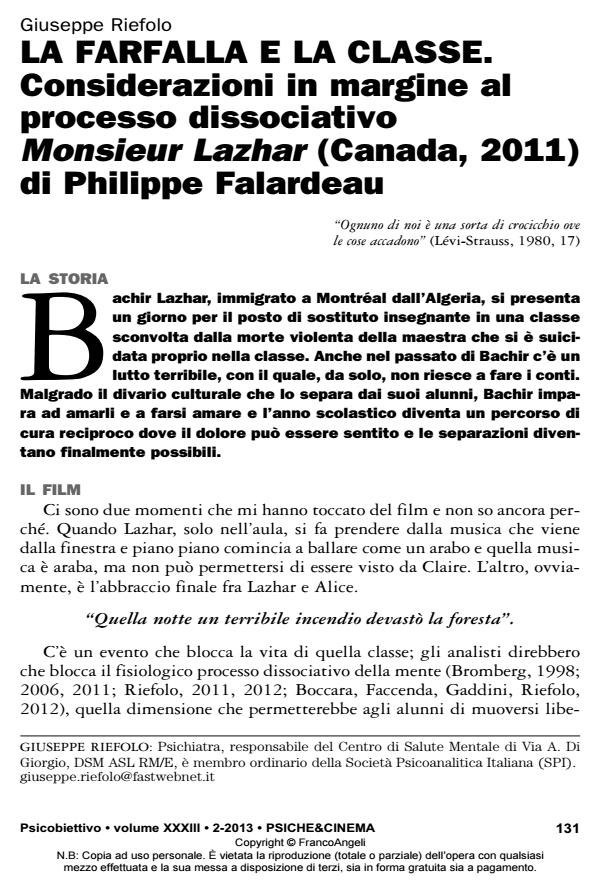The butterfly and the class. reflections on dissociative process Monsieur Lazhar (Canada, 2011) by Philippe Falardeau
Journal title PSICOBIETTIVO
Author/s Giuseppe Riefolo
Publishing Year 2013 Issue 2013/2
Language Italian Pages 7 P. 131-137 File size 122 KB
DOI 10.3280/PSOB2013-002011
DOI is like a bar code for intellectual property: to have more infomation
click here
Below, you can see the article first page
If you want to buy this article in PDF format, you can do it, following the instructions to buy download credits

FrancoAngeli is member of Publishers International Linking Association, Inc (PILA), a not-for-profit association which run the CrossRef service enabling links to and from online scholarly content.
The dissociative process is the physiological movement of the infinite configurations of the Self. Traumatic events can block its movement and then only a few, recurrent, traumatic configurations prevail preventing the physiological "collision of subjectivity". In the movie an awkward and, at the same time, wounded teacher, moves the block of the dissociative process of the class and - through the class - also his own block. What gives life to the dissociative process is Lazhar’s contact with ancient and warm configurations of his life and, the class, finally, can recognise that they’ve suffered, but, nevertheless, surviving to a severe violence.
Keywords: Dissociation; Dissociative Process; Trauma; Intersubjectivity; Enactment; Psychoanalysis and Movie.
Giuseppe Riefolo, La farfalla e la classe. Considerazioni in margine al processo dissociativo Monsieur Lazhar (Canada, 2011) di Philippe Falardeau in "PSICOBIETTIVO" 2/2013, pp 131-137, DOI: 10.3280/PSOB2013-002011